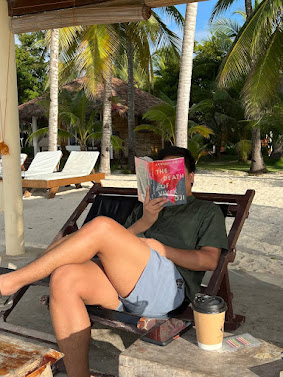Ah, and we're back to the wizarding world! As a huge Harry Potter geek, I was excited that there would be a revisit to a world we all loved— despite the absence of Harry and the whole gang. But at the same time, I was having qualms regarding the film because it'd be challenging to continue and not tarnish the legacy that the Harry Potter film series have set. But with Yates-- who directed the last four HP movies— and J.K Rowling herself on the reins, Fantastic Beasts and Where To Find Them was in good hands and the two, with the whole crew and cast has created a worthy extension film about the world we've all loved.
The basis of the movie is a fictional Hogwarts textbook written by Rowling (credited as the magizoologist Newt Scamander) of the same title that shares, well, the names of the fantastic beasts and where to find them. With Ron’s annotations and doodles scrawled all over the textbook, the book did not have much story. But Rowling creatively imagined Newt Scamander’s world.
In her screenwriting debut, Rowling wasn’t all that bad. But screenwriting and novel-writing are two hugely different forms. One can have as much freedom with novels—can write chapters after chapters, even lend one for the most minor character whose action led to an enormous conflict to be solved by the protagonist. But in screenwriting, there’s a limit: screenwriters should be able to provide an entertaining and appealing storyline about the characters that would not exceed the running time provided for the film. In Fantastic Beasts and Where to Find Them, Rowling presented two or three plotlines that were all so compelling and interesting that it was such a shame that not everything was expounded much further. The film could easily be divided into more movies, as the subplots felt much greater to be merely as such: the story of the witch-hunting, witch-hating Barebone clan; the political Shaw family; the whole Magical Congress of the United States of America (MACUSA); and the main plot which involved Newt Scamander and his fantastic beasts. The screenplay was charming and oozing with the signature Rowling wit and heart, but it was still noticeably messy, with various storylines fed to the audience all at once, creating this disconnected and incoherent plot.
Academy award winner Eddie Redmayne spearheaded the charming cast as the eccentric Newt Scamander, with Katherine Waterston and Alison Sudol as the sister witches Tina and Queenie Goldstein, and Dan Fogler as the good-natured No-Maj (No-Magic; basically the American version of a Muggle) Jacob Kowalski. And unfortunately, that seemed like the only thing that could be said to them (aside from Fogler and Sudol, to be honest): charming. I simply adore Redmayne, but he was all but unforgettable in his role as the wizard Newt. The only scene that really caught me was when Scamander was taken into custody of the MACUSA and pleaded to not hurt the beasts in his case. “They’re not dangerous!” he exclaimed.
Sudol’s seductive Legilimens (a telepathic witch, if I would so crudely encapsulate) Queenie effortlessly became fan favorite, alongside Fogler’s Kowalski and it’s not surprising at all. It was the two of them that grounded the story with their familiar trope of a plot. The two also brought some tenderness and heart, overcoming the blandness of Redmayne’s Scamander and Waterston’s Tina Goldstein.
Also part of the ensemble was the charismatic Colin Farrell as the Auror Percival Graves, and the much more charismatic Ezra Miller as the enigmatically freakish Credence Barebone. And can I just say that it was a delight to see Farrell and Miller working side-to-side with the palpable tension of sexual predation? (Side note: I’m not – in any way— tolerating sexual predation, just simply saying that they work so well together. End of side note.) Miller, despite having a screen time that was disappointingly short, had acted spectacularly that I wish he had a much longer and bigger role.
Other Points:
- Aside from the obvious difference in terms of the setting of the story, Fantastic Beasts felt much more adult than the original Harry Potter film— and not only because its main characters are all grown-ups— but also because it's less magical and much more political.
- Frank the Thunderbird, Dougal the Demiguise, and Pickett the Bowtruckle are the most fantastic beasts. Case closed (pun intended)
Fantastic Beasts and Where To Find Them is a remarkable extension of the magical world, despite having being a bit flawed. Also, the film served as a good introduction, considering that there would be four more movies. Let's just hope that the writing became much coherent and the cast, well, much remarkable. Still, Bastille, good film
Overall Rating: 8/10










0 Comments